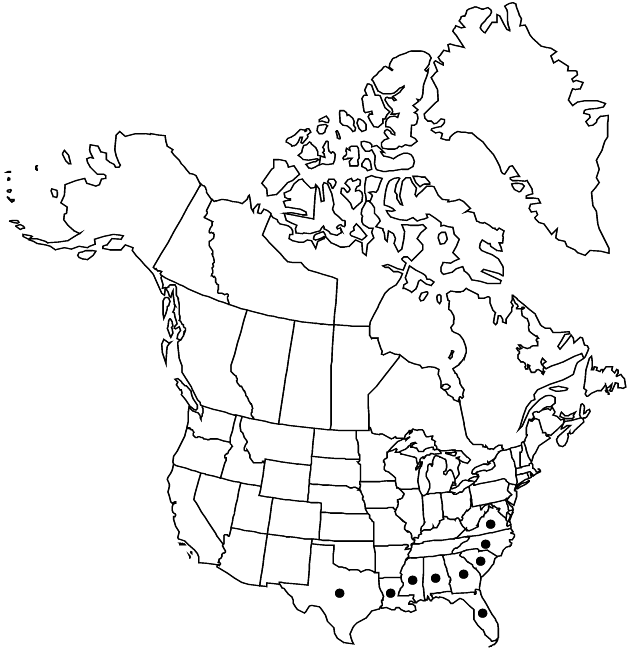Borrichia frutescens
in A. P. de Candolle and A. L. P. P. de Candolle, Prodr. 5: 489. 1836.
Stems usually erect, sometimes decumbent or arching. Leaves (at least mid cauline) obovate or elliptic to oblanceolate, 4.5–8 (–11) × 1–3 cm, (petioles or blade bases usually with 1–2+ spine-tipped teeth) margins dentate to serrate (usually only proximal 1/3–1/2, rarely most of each margin), faces usually villous (longer hairs) and/or sericeous (shorter hairs), rarely glabrous. Heads borne singly (peduncles 2–6 cm). Involucres globose, 5–8 mm. Phyllaries 20–40 in 3–4 series (reflexed in fruit, outer shorter, apices spine-tipped, inner similar, spines spreading to erect, faces sericeous). Paleae: apices spine-tipped. Ray-florets 15–30; laminae 6–8 × 2.5–6 mm. Disc-florets 20–75; corollas 5–6.5 mm, lobes 1.75–2.5 mm. Cypselae 2.5–4 (–5) mm, 3–4-angled. 2n = usually 28, rarely 42 (2n = 3x).
Phenology: Flowering late spring–summer.
Habitat: Salt marsh communities, brackish backwaters, limestone rocky shores
Elevation: 0–10 m
Distribution

Ala., Fla., Ga., La., Miss., N.C., S.C., Tex., Va., Mexico, in West Indies, Bermuda
Discussion
Borrichia frutescens grows in salt marsh and brackish backwaters along the Atlantic and Gulf coasts from Virginia to the Yucatan Peninsula in Mexico, and inland along the Rio Grande Valley in Texas. It is found on limestone rocky shores in the Florida Keys. It is introduced in Bermuda, the Bahamas, and Cuba.
Selected References
None.
Lower Taxa
"broader" is not a number.